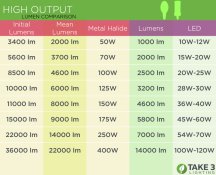Hey wiltw,
I'm hoping to use my 4800ws Speedotron for direct positive color reversal for fun and maybe as an on going project if I like or accept the wonky colors and mottling.
I like the editorial/magazine look with direct flash (where the light is sitting right above the lens).
Since ISO is around 1-3, from my calculations, it seems I don't want the light further than 4 feet from the subject.
To get the camera 4 feet away I think I need a 240mm lens for my 8x10 format camera.
I just don't know if the light will be too bright as a point light source.
I remember though, that people on a some forum said that if you make the light bigger, it's less dangerous for the eyes.
So, I know at least I can use an umbrella or softbox/octabox. I'm going to test with a light meter tonight to see how many tops I loose with the diffusion layers in my softbox at ISO 3 / f/5.6 with the light as close as possible. (with Alien Bees)
But yesterday I found a competitor to the Arri SkyPanel s360c, the SpaceX by creamsource.com.
The Spacex is a 1200 watt LED light.
I contacted the manufacturer and they did some light metering tests for me and they got:
light to subject distance 3 feet
ISO 3
f/5.6
Shutter Speed 1/8 - 1/2 second depending on narrow beam vs wide beam vs diffusion layer used.
The only issue is that It would end up costing me 9000 Canadian dollars to get setup and I would like to test the strobes
first (Waiting to find time to get my Speedotron powerpacks to a repair shop for service/checkup).
What do you think I should do Wiltw? Stick with the strobe and avoid direct light lighting?
And if the strobes with a softbox modifier is still to uncomfortable/dangerous, I guess I can sell some toys and
buy the LED light.
Thanks for your time again

Be well!
Kevin H.





 typos... 110,000 Lumens and 120,000 Lumens (earlier post edited)
typos... 110,000 Lumens and 120,000 Lumens (earlier post edited)